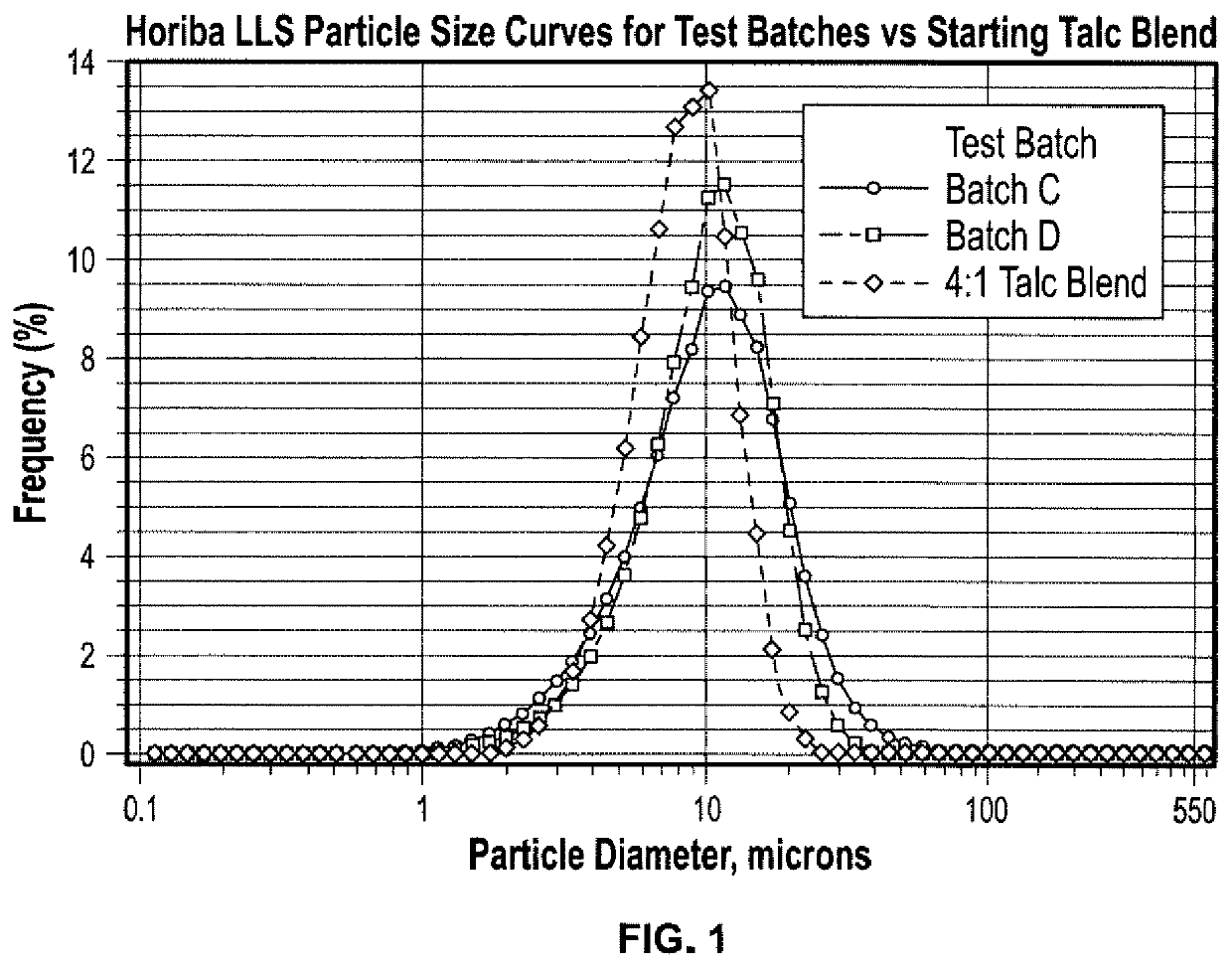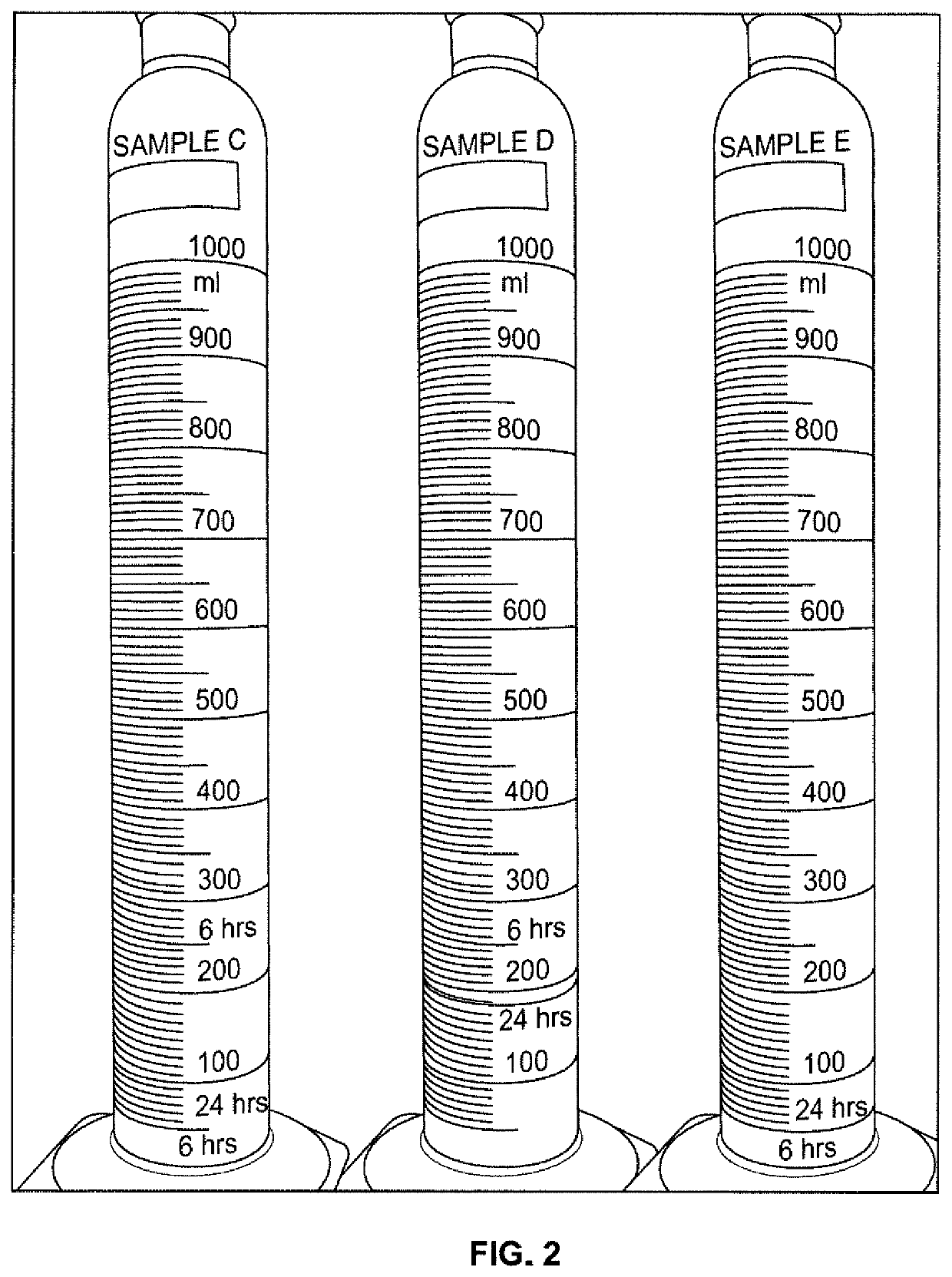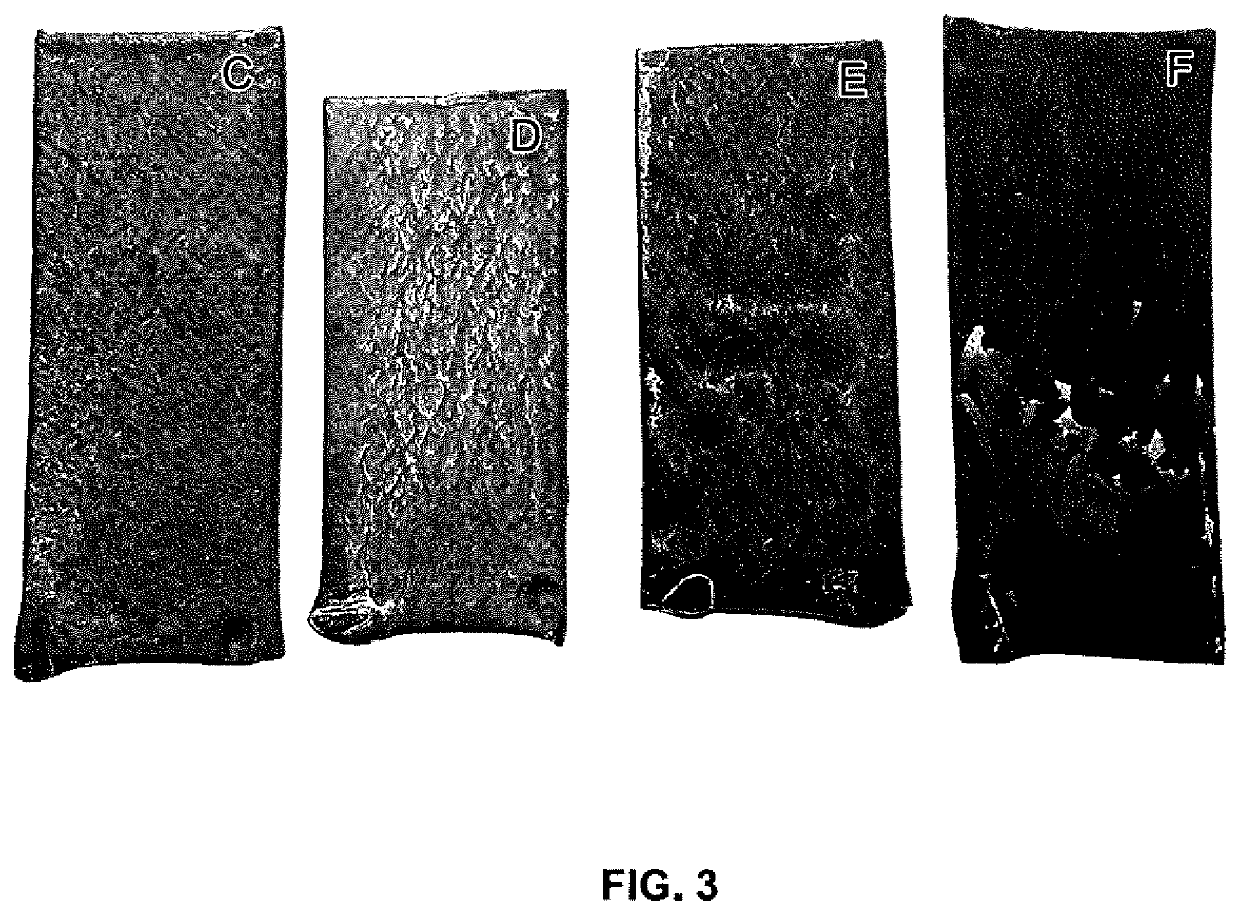Diluted Anti-tack formulation and method of use of diluted Anti-tack formulation
a technology of anti-tack formulation and anti-tack slurry, which is applied in the direction of emulsion paints, coatings, etc., can solve the problems of not teaching the use of water soluble cationic polymers, low solids content of formulations, and low solids content, so as to improve anti-tack performance and dip slurry properties, high inventiveness, and improved anti-tack performance
- Summary
- Abstract
- Description
- Claims
- Application Information
AI Technical Summary
Benefits of technology
Problems solved by technology
Method used
Image
Examples
example 1
[0132]Table I summarizes the composition for two different talc-based anti-tack formulations that were produced on a production scale of 3,600 lbs. using different types of high-speed dispersers.
TABLE ICompositional Summary for Anti-Tack Talc Formulations A & BcTalc Anti-TackTalc Anti-TackFormula BFormula AMethod: Dual ShaftMethod: Single ShaftHigh-Speed DisperserHigh-Speed Disperserwith Wall ScrapperChemicalProperties &Wt. inWt. inTradename / Functionality ofProductionWt. % inProductionWt. % inSupplierChemical NameIngredientCAS #Batch, lbs.FormulaBatch, lbs.FormulaSoft WaterDihydrogen OxideSolvent Phase7732-18-51,708.4347.45%1,575.5943.77%Talc SAS-3 / CimbarTalc; MagnesiumAnti-Block14807-96-61,350.0037.50%1,530.0042.50%PerformanceSilicate HydratePigmentMinerals(3 micronmedian p.s.)aFlexTalc 610 / Talc; MagnesiumAnti-Block14807-96-6340.009.44%378.0010.50%Cimbar PerformanceSilicate HydratePigmentMinerals(1 micronmedian p.s.)aEthal TDA-5 / EthoxPEG-5 TridecylInterfacial24938-91-866.601.85%20....
example 2
[0147]In this Example, a series of talc based anti-tack formulations were all produced on a 5,300 gram lab scale using high-speed dispersers. As shown in Table V, the four anti-tack formulations are identified as Formulas C, D, E and F.
TABLE VPhysical Property Tracking Dataa for Lab Batchesof Talc Anti-Tack Formulations C, D, E & FAnti-TackFormulationInitial BFAged BF Visc.,Aged BF Visc.,Aged BF Visc.,(% Solidsb &Viscosity, pH &pH & Cond. afterpH & Cond. afterpH & Cond. afterDescription)ConductivitycAging 3 DaysAging 7 DaysAging 14 DaysFormula C @ 52.2%Sp #91Sp #91Sp #92Sp #92SolidsBF @ 2 rpm =BF @ 2 rpm =BF @ 2 rpm =BF @ 2 rpm =Description:18,000 cps52,100 cps75,200 cps84,600 cpsTalc based Anti-BF @ 20 rpm =BF @ 20 rpm =BF @ 20 rpm =BF @ 20 rpm =Tack via Cowles4,140 cps9,630 cps12,400 cps15,760 cpsDisperser; Lab ScalepH = 9.64pH = 9.72pH = 9.59pH = 9.46Equiv. to Formula ACond. = 2.61Cond. = 2.85Cond. = 2.78Cond. = 2.53mS / cmmS / cmmS / cmmS / cmFormula D @ 56.1%Sp #91Sp #91Sp #91Sp #91Sol...
example 3
[0157]This Example is analogous to Example 2 in scope and in dip slurry testing protocol except that four new anti-tack formulations were produced on a laboratory bench scale for testing. Formulations G, H, I and J of Table VII are all compositionally related to Formula C of Example 2.
[0158]Compositionally anti-tack Formulas G, H, I, and J are identical to anti-tack Formula C except that a portion of the 3 micron mps talc content has been replaced by another anti-block pigment (namely with calcium stearate, calcium carbonate, calcined kaolin clay and phlogopite mica, respectively). In each case, 26.67% by weight of the active basis 3 micron mps talc content present in Formula C has been replaced in producing this new set of anti-tack formulas. In these new formulations, this means that about 21.3% by weight of the total dry basis talc content, the total being the combined amount of 3 micron mps talc plus 1 micron mps talc, has been replaced with the aforementioned alternative anti-b...
PUM
| Property | Measurement | Unit |
|---|---|---|
| particle size | aaaaa | aaaaa |
| molecular weight | aaaaa | aaaaa |
| volume | aaaaa | aaaaa |
Abstract
Description
Claims
Application Information
 Login to View More
Login to View More - R&D
- Intellectual Property
- Life Sciences
- Materials
- Tech Scout
- Unparalleled Data Quality
- Higher Quality Content
- 60% Fewer Hallucinations
Browse by: Latest US Patents, China's latest patents, Technical Efficacy Thesaurus, Application Domain, Technology Topic, Popular Technical Reports.
© 2025 PatSnap. All rights reserved.Legal|Privacy policy|Modern Slavery Act Transparency Statement|Sitemap|About US| Contact US: help@patsnap.com



